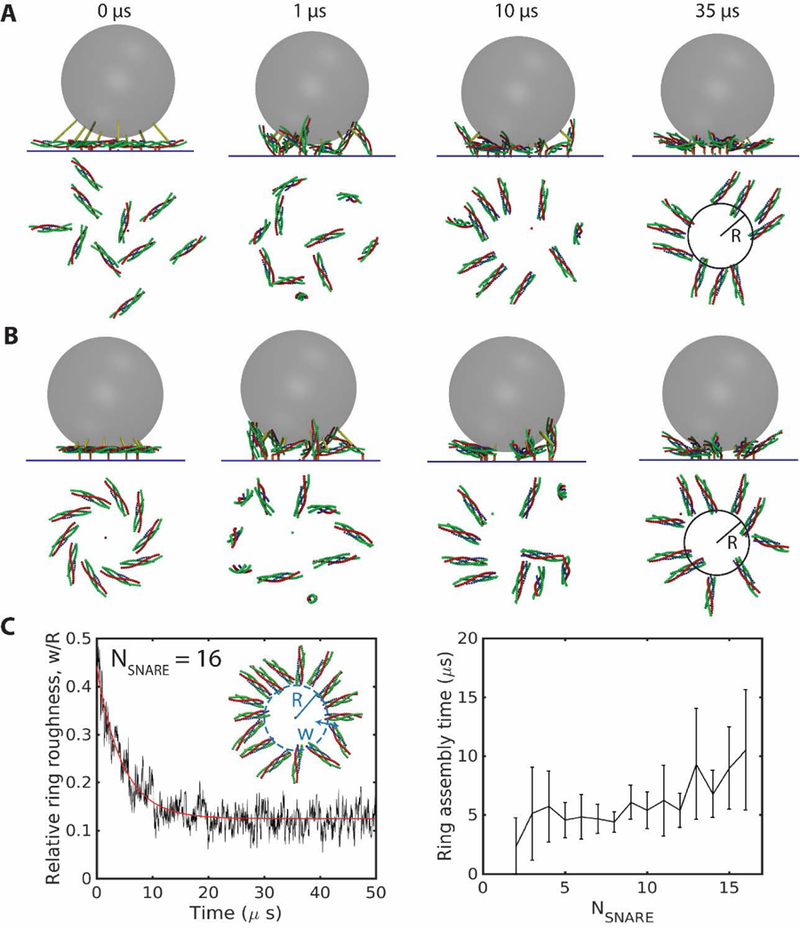Fig. 1.

SNAREpins spontaneously assemble into a ring. Simulations of the model described in text, parameters as in Tables S1, S2. (A), (B) Snapshots of simulations with SNARE complexes bridging a synaptic vesicle membrane and the plasma membrane. Side views (top) and top views of the SNAREs (bottom) at the indicated times. From either a random, half-zippered initial condition (A), or a plausible ordered pre-fusion initial configuration, (B), the SNAREpins become fully zippered and self-assemble into a ring. (C) Relative inner ring roughness versus time for 16 SNAREpins starting from a random initial condition (left). The relative roughness decreases (red curve is best fit exponential, with time constant 4.5 µs) to a minimum of ~ 0.12 in the fully assembled ring. Ring assembly times from exponential fits versus number of SNAREs (right). More SNAREpins need longer to assemble. Error bars are standard deviation, n=20.
